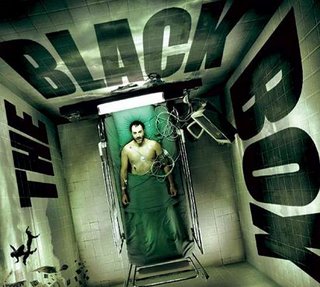
Electroconvulsive therapy, or ECT, is considered to be a highly effective treatment for depression. The story goes that roughly 90% of patients respond. The down-side is that it requires general anesthesia with all it's attendant risks, and patients may suffer from headaches, and memory loss. The memory loss is often mild, but there are cases where it is profound and very, very troubling. As with any psychiatric treatment ---or so it seems-- there are those who say it saved them and those who say it destroyed them. Because the risks aren't minor, the procedure is expensive and often done on an inpatient unit, and people generally don't like the idea of having an IV line placed, being put under, then shocked through their brain until they seize, only to wake up groggy and perhaps disoriented with a head ached, it's often considered to be the treatment of last resort, when all else has failed. This makes the 90% response rate even more powerful.
I'm no expert on ECT. I haven't administered it since I was a resident and I don't work on inpatients where I see people before and after. I've rarely recommended it, and then I've been met with a resounding, "NO." My memory of it was that it worked, and that most people didn't complain of problems. One woman read a novel during her inpatient stay. I asked if she had trouble following the plot (ECT in the morning, novel reading in the afternoon) and she said no.
The FDA has been looking at the safety and efficacy of the machines used to perform ECT. It's a fairly complex story where the FDA advisory panel was considering whether to keep ECT machines categorized as "Class III" machines which would now require machine manufacturers to prove their efficacy and safety. A reclassification as Class II (and therefore lower risk) would not require this stringent proof.
On Medscape, Fran Lowry writes:
If the FDA decides to follow the advice of its Neurological Devices Committee, it means that the 2 companies that currently manufacture ECT machines would have 30 months to submit a premarket approval to show that the devices are safe and effective.
ECT has been in use since before the FDA enacted new, more stringent laws for device approval, and psychiatrists fear that the logistics of conducting new trials will pose insurmountable problems for the manufacturers.
They also doubt whether data from any new trial would be sufficient to convince a subsequent advisory panel of the efficacy and safety of the devices, long considered by the APA to be life-saving.
"It hasn't been yanked from the market right now," said Sarah H. Lisanby, MD, head of psychiatry, Duke University, Durham, North Carolina, and chair of the APA Task Force to Revise the Practice of Electroconvulsive Therapy.
"But the continued availability of this life-saving treatment in the long term lies in the hands of the FDA right now. We're pleased it wasn't taken off the market instantly, but if new trials are going to be required, it's not clear who will fund them and whether they will in fact even be done. This is the concern," she told Medscape Medical News.
David Brown has an excellent article in the Washington Post-- see "FDA panel advises more testing of 'shock therapy' devices."
(As an unrelated aside, since Roy claims that "everyone" is my neighbor , I'll mention that David Brown is also my neighbor. )
In surfing, I found a strong anti-ECT sentiment on many blogs. There were also those who said it helped them, but theirs was a quieter rant. I particularly enjoyed Electroboy's rendition of his treatment for mania.
If you have thoughts or stories, by all means....
Thanks to Bob Roca for the heads up on the FDA hearings.









